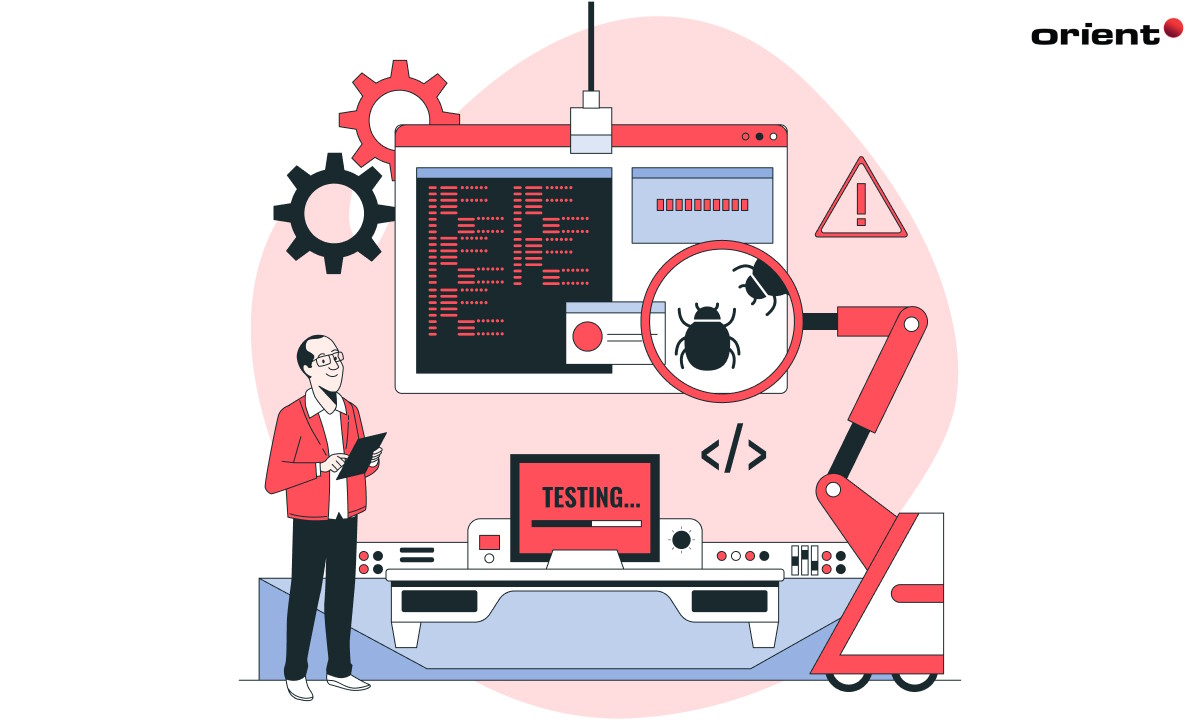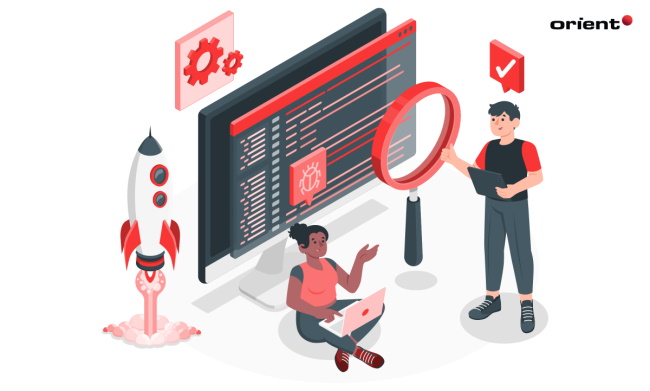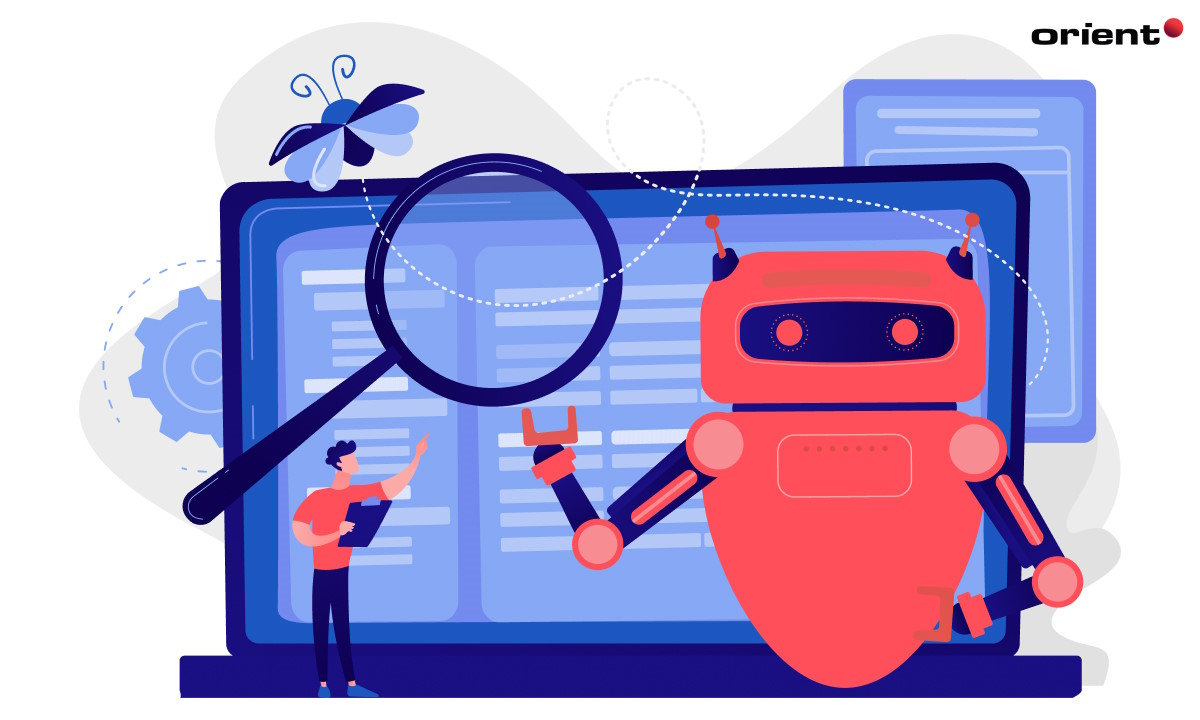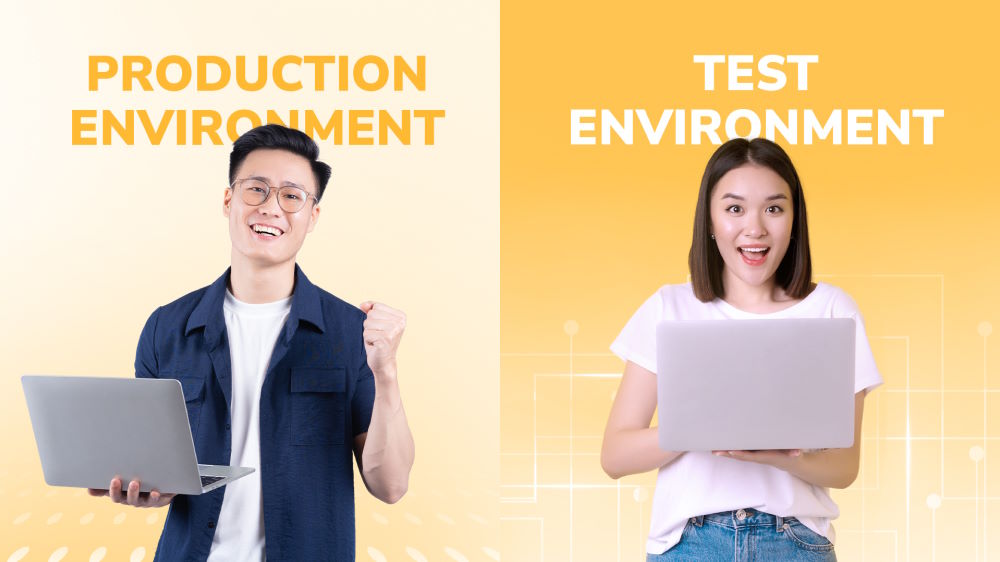How Machine Learning Can Be Utilized in Software Testing

Content Map
More chaptersMachine learning (ML) is known as a subset of Artificial Intelligence (AI) where you teach a computer or program to perform various functions without specifically programming it to do so.
This is achieved by teaching the system to identify trends and patterns, analyze different data group sets, and predict future outcomes. In essence, the goal of machine learning is to teach a system to think and act like a human, where it can learn from experience, adapt to unforeseen scenarios, and recommend viable solutions to complex problems – early and often – before those problems escalate and become harder to fix later on.
When it comes to machine learning in software testing, there are many key takeaways of automated software testing and benefits to consider. It has the potential to reduce time spent on software testing, improve the accuracy and reliability of test results, reduce the potential for human error, automate repetitive, mundane tasks, and provide early (and frequent) bug and error detection.
In this article, you will learn about software testing, how machine learning can be used in software testing, and how to integrate machine learning into your existing (or soon to be existing) software testing processes.
What Is Software Testing?

Software testing is the process of ensuring a software application meets set criteria of performance standards.
These standards can relate to various aspects of the software, such as security, performance, UI/UX design, device and platform compatibility, and functionality.
Most software development projects these days follow the DevOps (Development Operations) methodology, which means that software testing is baked into every stage of development, from concept to completion. This ensures that potential bugs, errors, and flaws can be caught and rectified early before they become so ingrained in the software that they severely impact the user experience and the functionality of the program.
It also ensures that every member of the software development team, from designers to programmers, keeps in mind how their contribution impacts the overall quality of the software and that it meets all the relevant performance criteria.
Usually, this criterion is set by the development team, but it may also be influenced by the business requirements of the clients and the regional laws that the software must abide by.
For instance, if the software were to be released in Australia, it would have to comply with the Australian Privacy Act 1988, but if the same software was released in Europe, then it would have to comply with the General Data Protection Regulation (GDPR), among others.
What are the Different Types of Testing Methods?
There are many different software testing types out there. These API testing methods and testing tools are used at different stages of development, and they are designed to analyze different aspects of an application. Unit Tests are designed to test the functionality of a new feature or model before it goes into the software, while Integration Tests are designed to test the functionality of the relationship between one or more features or models after they are integrated into the software.
Some software testing methods are best performed manually, such as testing the user-friendliness of the interface (however, automated UI testing tools are starting to show up), while other testing methods can be comfortably automated without compromising the test data.
One example where automation is strongly encouraged is Regression Testing. The point of regression tests is to test the software each time it goes through a code change, update, or improvement. This is because even the slightest change in code can alter the functionality of the software in unpredictable ways.
However, performing manual tasks after even change is both time and resource intensive, which is why automation testing is a great solution for this problem.
Other types of automated software testing include Performance Testing, which analyzes how the software performs under intense workloads; Smoke Testing, which analyzes the basic functionality of the software; and Acceptance Testing, which ensures the software satisfies all business requirements.
How Can Machine Learning Be Applied to Software Testing?
When developed with a specific goal in mind and properly trained by artificial intelligence experts, machine learning can aid in the process of software testing in many ways. It can help you create tests and perform test analysis, and report reports. And it can do so without taking away the human element of software testing, either.
After all, there need to be people who can write test cases, train the algorithms, and monitor the testing stability, so that they test the right components of the software and produce accurate Pass/Fail API test results.
More importantly, human QA and testing team members need to be there to ensure that the test results match the predefined performance criteria, as set by the development team, the client, and the relevant regional standards.
Here are just a few ways in which machine learning technology can be used in software testing.
Test Automation Creation
The QA and testing team need to write test cases. These are essentially mini-programs that test the software for very specific things. For example, the functionality of specific UI elements such as buttons.
If a change, update, or improvement is made to the code, then the test case must be rewritten in order for it to test the software in its current state. This process can be very time and resource intensive, as the QA and testing team must laboriously rewrite each test case after each code change.
Machine learning algorithms can be trained to automatically pick up on changes in the code of the software to help save time and reduce the need to test manually.
As more and more tests are conducted, machine learning software systems build models of how the software should work, gathering huge amounts of data that it can reference later on. This means it can automatically adapt to minor or major changes to the code, thus reducing the time spent on manual testing and case rewriting.
Test Automation Analysis
When a test case is run, it will produce a Pass or a Negative test result. It is then up to the QA and testing team to review the results and then determine the accuracy of those results.
Under certain test scenarios, it is not uncommon for the case to produce a false Pass (where the test scripts are not programmed to account for the possibility of a certain type of fault) or a false Negative (where the system misinterprets the existence of a new feature, function, or event as a bug or error). This means the QA and testing team has to specifically tell the system what to look for. Otherwise, it may lead to glaring oversights or misinterpretation.
By incorporating machine learning into the test analysis process, the QA and testing team can leverage computer vision and machine learning. What is computer vision? It is a field of artificial intelligence that uses image recognition technology to teach systems to interpret still and moving images, and the relationship between those images.
With enough training, the system will then learn what each image is, how they work, and how they relate to one another. Therefore, the system can accurately identify new (and existing) elements of the software, determine what they do, and decide how they work within the context of the entire software as a whole.
Also, because the system is more adaptable to both minor and major code changes, the risk of false Positives or Negatives is significantly reduced.
Test Automation Maintenance
Test maintenance is the process of monitoring and maintaining the test scripts (or cases) to ensure they test the latest version of the software.
One reason why test maintenance exists is because of selectors. Selectors are used to telling the software testing program what UI elements to interact with. The problem is that when creating software code changes, it also changes the selectors within that software, which means that each test script must be rewritten. Otherwise, it will produce test failures or proceed to analyze the wrong UI elements.
With machine learning, automated tests can detect what element changes or moves and then select the right elements in the next test. So, for example, if you change the placement of a Menu button from one place to another, the system will register the change in placement and analyze the button in its new position.
While more significant changes may require fine-tuning from the human QA and testing team, the time spent on adjusting test scripts is still much less than before. Even better still, if the test detects a problem, it can almost certainly identify it, determine the nature of the problem, and then recommend one or more solutions to rectify the matter.
How to Integrate Machine Learning into Software Testing
Determine the Need for Machine Learning
In order to properly integrate machine learning into the software testing process, one must consider the reason for taking this initiative in the first place.
Will it help aid in the early detection of potential bugs, errors, and vulnerabilities? Will it help fill gaps in the test analysis that were previously difficult to test for through automation (i.e., slight variations in the way different users interact with the same software)? And most importantly, will it speed up the process of software testing and help clients get their products to market sooner?
By answering these questions, both you and your software development team will have a clear understanding of what machine learning in software testing can do and how it can help streamline the software development process and improve the quality of the final product.
Define the Technology Stack
In addition, the QA and testing team needs to define the technology stack to be used in machine learning.
There are many types of machine learning applications out there, and choosing the right ones is imperative to the success of your testing procedures.
For instance, there is a wide range of machine learning libraries, which contain a wealth of readily usable functions and routines. These libraries allow the QA and testing team to write complex software testing machine learning programs without writing all the code from scratch. This makes it easier for the team to ensure the software satisfies all functional and non-functional requirements.
Use Dedicated Experts
Lastly, the QA and testing team needs to have a dedicated data science team that specializes in machine learning and AI.
They should be able to write the machine learning algorithms, feed it the correct test data, monitor the software testing procedures, and ensure that the test results match the performance expectations of the team, the client, and the relevant regional laws that the software must abide by.
By having dedicated artificial intelligence experts at the helm, they can make sure the systems are aiding – and not hindering – the software testing processes and that it is enabling autonomous testing to be more effective and accurate than ever before.
Machine Learning in Software Testing Summarized

Whether your priority is to speed up the software testing process, improve the accuracy of the test results, or reduce time spent on unnecessary manual labor, machine learning, and AI – when set up properly – is an extremely effective way to boost your software testing efforts.
Of course, just like introducing any new technology to an existing workflow, machine learning, and AI can produce more headaches than solutions if not done properly. That is why it is important to utilize the help of dedicated machine learning and AI experts.
By drawing from years of knowledge and experience, they will know how to seamlessly integrate machine learning and AI into the software testing process by implementing solutions that align with your unique software development and business goals.
So, whether you want to improve the customer journey, boost the speed and performance of your software, or comply with newly introduced regulatory guidelines, machine learning, and AI can more effectively help you achieve these outcomes.







